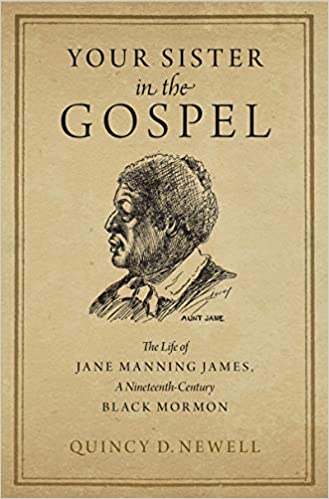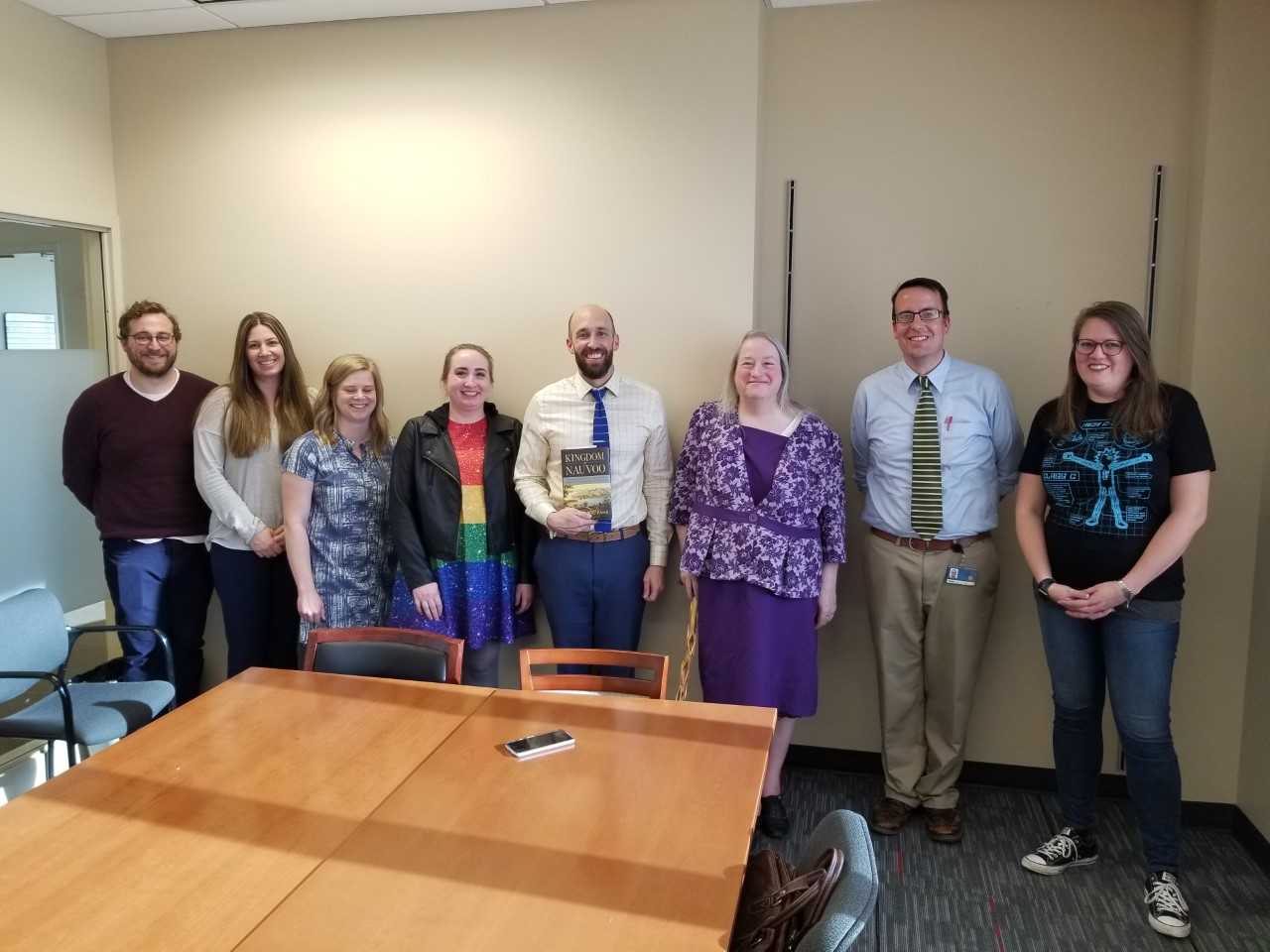The Dean May Colloquium invites Mormon Studies scholars from across the nation to
the University of Utah to workshop their most recent books with University of Utah
graduate students and community members.
 The September Six and the Struggle for the Soul of Mormonism
The September Six and the Struggle for the Soul of Mormonism
By Sara M. Patterson
In the single month of September 1993, the Church of Jesus Christ of Latter-day Saints
excommunicated or disciplined six of its members. These six individuals–some of them
intellectuals, some activists, and some both–were soon dubbed the “September Six.”
In The September Six and the Struggle for the Soul of Mormonism, Sara M. Patterson challenges readers to think more deeply about the events of that
month and the era in which they unfolded. Patterson argues that the clever alliterative
phrase “September Six” masks our ability to see that what happened that month was
part of a much broader, decades-long cultural and theological debate over the nature
of the church and its restoration narrative.
Purchase Book
 Marianne Meets the Mormons: Representations of Mormonism in Nineteenth-Century France
Marianne Meets the Mormons: Representations of Mormonism in Nineteenth-Century France
By Heather Belnap, Corry Cropper, and Daryl Lee
In the nineteenth century, a fascination with the Church of Jesus Christ of Latter-day
Saints made Mormons and Mormonism a common trope in French journalism, art, literature,
politics, and popular culture. Heather Belnap, Corry Cropper, and Daryl Lee bring
to light French representations of Mormonism from the 1830s to 1914, arguing that
these portrayals often critiqued and parodied French society. Mormonism became a pretext
for reconsidering issues such as gender, colonialism, the family, and church-state
relations while providing artists and authors with a means for working through the
possibilities of their own evolving national identity.
Purchase Book
 Your Sister in the Gospel: The Life of Jane Manning James, a Nineteenth-Century Black
Mormon
Your Sister in the Gospel: The Life of Jane Manning James, a Nineteenth-Century Black
Mormon
By Dr. Quincy D. Newell
Your Sister in the Gospel is the first scholarly biography of Jane Manning James or,
for that matter, any black Mormon. Quincy D. Newell chronicles the life of this remarkable
yet largely unknown figure and reveals why James's story changes our understanding
of American history.
Purchase Book
 Railroading Religion: Mormons, Tourists, and the Corporate Spirit of the West
Railroading Religion: Mormons, Tourists, and the Corporate Spirit of the West
By Dr. David Walker
Railroads, tourism, and government bureaucracy combined to create modern religion
in the American West, argues David Walker in this innovative study of Mormonism's
ascendency in the railroad era. The center of his story is Corinne, Utah—an end-of-the-track,
hell-on-wheels railroad town founded by anti-Mormon businessmen. In the disputes over
this town's frontier survival, Walker discovers intense efforts by a variety of theological,
political, and economic interest groups to challenge or secure Mormonism's standing
in the West.
PURCHASE BOOK

The Bear River Massacre: A Shoshone History
By Darren Parry, Northwest Band of Shoshone Chairman
Even though the Bear River Massacre was a defining event in the history of the Northwest
Band of the Shoshone, in Parry’s retelling the massacre did not trap his people in
death, but offered them rebirth. While never flinching from the realities of Latter-day
Saint encroachment on Shoshone land and the racial ramifications of America’s spread
westward, Parry offers messages of hope. As storyteller for his people, Parry brings
the full weight of Shoshone wisdom to his tales—lessons of peace in the face of violence,
of strength in the teeth of annihilation, of survival through change, and of the pliability
necessary for cultural endurance. These are arresting stories told disarmingly well.
What emerges from the margins of these stories is much more than a history of a massacre
from the Shoshone perspective, it is a poignant meditation on the resilience of the
soul of a people.
PURCHASE BOOK

Kingdom of Nauvoo: The Rise and Fall of a Religious Empire on the American Frontier
By Benjamin E. Park
Compared to the Puritans, Mormons have rarely gotten their due, treated as fringe
cultists at best or marginalized as polygamists unworthy of serious examination at
worst. In Kingdom of Nauvoo, the historian Benjamin E. Park excavates the brief life of a lost Mormon city, and
in the process demonstrates that the Mormons are, in fact, essential to understanding
American history writ large. Drawing on newly available sources from the LDS Church—sources
that had been kept unseen in Church archives for 150 years—Park recreates one of the
most dramatic episodes of the 19th century frontier.
PURCHASE BOOK
 Tabernacles of Clay: Sexuality and Gender in Modern Mormonism
Tabernacles of Clay: Sexuality and Gender in Modern Mormonism
By Taylor G. Petrey
Taylor G. Petrey's trenchant history takes a landmark step forward in documenting
and theorizing about Latter-day Saints (LDS) teachings on gender, sexual difference,
and marriage. Drawing on deep archival research, Petrey situates LDS doctrines in
gender theory and American religious history since World War II. His challenging conclusion
is that Mormonism is conflicted between ontologies of gender essentialism and gender
fluidity, illustrating a broader tension in the history of sexuality in modernity
itself.
PURCHASE BOOK
 The September Six and the Struggle for the Soul of Mormonism
The September Six and the Struggle for the Soul of Mormonism Marianne Meets the Mormons: Representations of Mormonism in Nineteenth-Century France
Marianne Meets the Mormons: Representations of Mormonism in Nineteenth-Century France Your Sister in the Gospel: The Life of Jane Manning James, a Nineteenth-Century Black
Mormon
Your Sister in the Gospel: The Life of Jane Manning James, a Nineteenth-Century Black
Mormon Railroading Religion: Mormons, Tourists, and the Corporate Spirit of the West
Railroading Religion: Mormons, Tourists, and the Corporate Spirit of the West

 Tabernacles of Clay: Sexuality and Gender in Modern Mormonism
Tabernacles of Clay: Sexuality and Gender in Modern Mormonism


